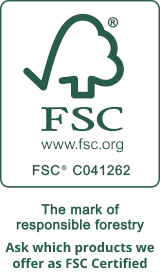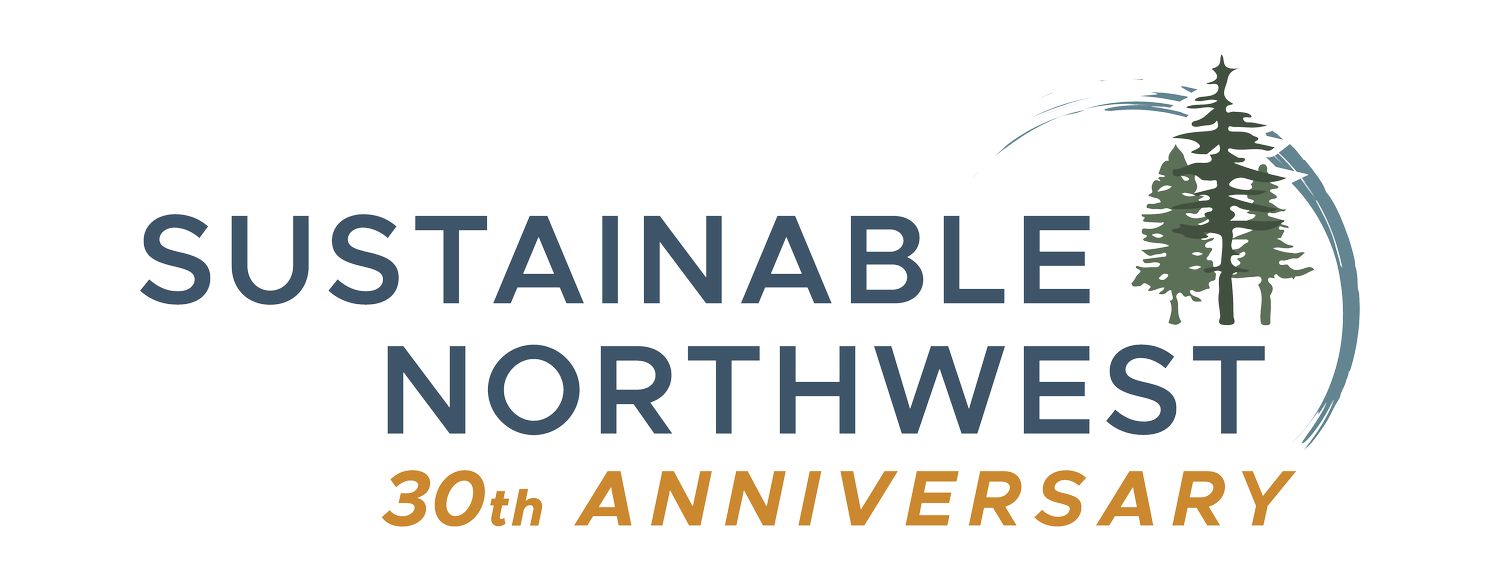Climate-Smart Forestry Tour
We recently joined an educational forest tour with the goal of showing a variety of forest management practices and highlighting the key differences between them in an effort to add definition to the term “climate-smart forestry.”

By Jake Foster, Sales Manager Sustainable Northwest Wood
Building industry leaders are increasingly turning toward wood products to address climate change. Western forests and the timber products from them have tremendous potential to impact our global climate, for better or worse. The Forest Stewardship Council and Turner Construction teamed up to host an educational forest tour to show us a variety of forest management practices, firsthand, boots on the ground, and highlight the differences between them in an effort to have a conversation about the industry's impact on climate by way of the built environment.

The Climate Smart Wood Group, of which FSC is a founding steering committee member, defines climate-smart forestry as management that advances conservation and restoration of forest ecosystems, removes and stores more atmospheric carbon than conventional practices, and increases resilience in the face of climate change.
A group of several notable organizations whose operations are in some way dependent upon forest products gathered at Sustainable Northwest Wood bright and early. We headed out to the Coast Range of Northwest Oregon, an area with a long history of forestry and logging.

The first stop of the day was the Mt. Richmond Forest, owned and operated by Hyla Woods. Hyla Woods is a multi-generational family-owned business caring for three working experimental forests in the region. The tour was led by Peter Hayes, President of Hyla Woods and Board Chair for the Build Local Alliance. Peter shared a lifetime of stories and insights gained from his time spent in the forest. While many forests in the region are managed to maximize the single value of short-term financial return, Hyla Woods approach is different. Their focus is centered around positive impact forestry methods, which aim to grow ecologically complex, economically viable, responsibly managed forests. In addition to a financial return, their management focuses on providing essential benefits such as clean water and air, local jobs, fire mitigation, and carbon sequestration.

We then moved on to a site that is more commonly seen in the Oregon coast range: a large desolate clearing in the forest indicating recent industrial logging activity. In contrast to Hyla’s management practices, this stop displayed a forestry management approach with goals based more on the financial bottom line. Large swaths of land are planted with a single species of tree, which is then grown for 35-40 years or so before being clearcut and replanted. What is left is a large barren area which is treated with herbicides until newly planted seedlings are large enough to out compete the other native and invasive species. Clear cutting is the most economical method of forest harvesting, but this plantation style management lacks biodiversity of species in both flora and fauna and is eerily still and lifeless.
We drove deeper into the coast range to the Garibaldi Forest, managed by EcoTrust Forest Management (EFM). Our tour vans meandered up well maintained roads into the hills where the Pacific Ocean could be seen to the West. Here we were hosted by CEO and Co-Founder of EFM Bettina Von Hagen, as well as Senior Forester Darin Stringer. The nearly 5000 acre Garibaldi Forest is unique in that it is managed as a real asset investment, which seeks to provide both social and conservation values, as well as provide adequate risk-adjusted financial returns to its investors. After being extensively evaluated, various sections of the land and forest are then managed differently to fulfil EFM’s goals. For example, one drainage is managed as a Carbon Offset in which companies pay to leave it untouched for its carbon storing benefit as well as high conservation values in the form of fish and wildlife habitat. Other parcels are logged following FSC standards and the lumber is then sold providing financial gain. I personally found this property to be a fascinating and forward-thinking solution that solves many challenges that arise at the intersection of land management, resource allocation and capitalism.

If you’d like to read more about what was shared, you’ll find more information in the Forest Tour Handout. If you’d like to get involved in efforts to reduce your carbon footprint or have a project we can help you with to achieve even the most rigid sustainability goals, send a note to us at info@snwwood.com or call us 503.239.WOOD

Project Support
Find local sustainable wood products in Portland Oregon

Our Why
We exist to promote Good Wood in the Pacific Northwest and beyond
Sustainable Northwest Wood
2701 SE 14th Ave.
Portland, OR 97202
Monday - Friday
8am to 5pm


© 2024 Sustainable Northwest Wood

Our nonprofit parent company is Sustainable Northwest